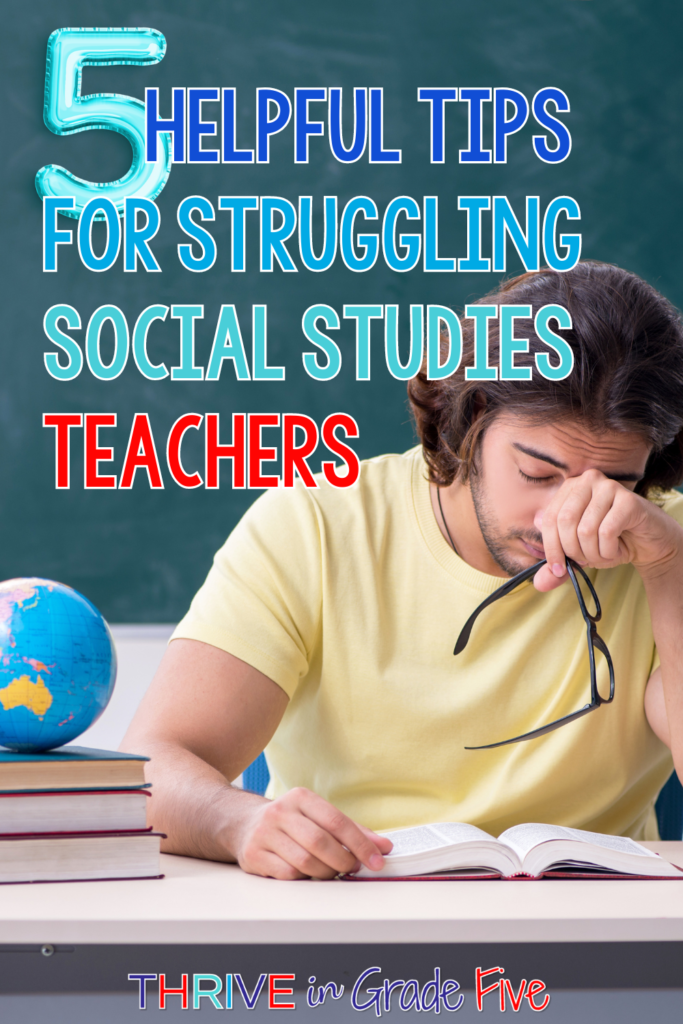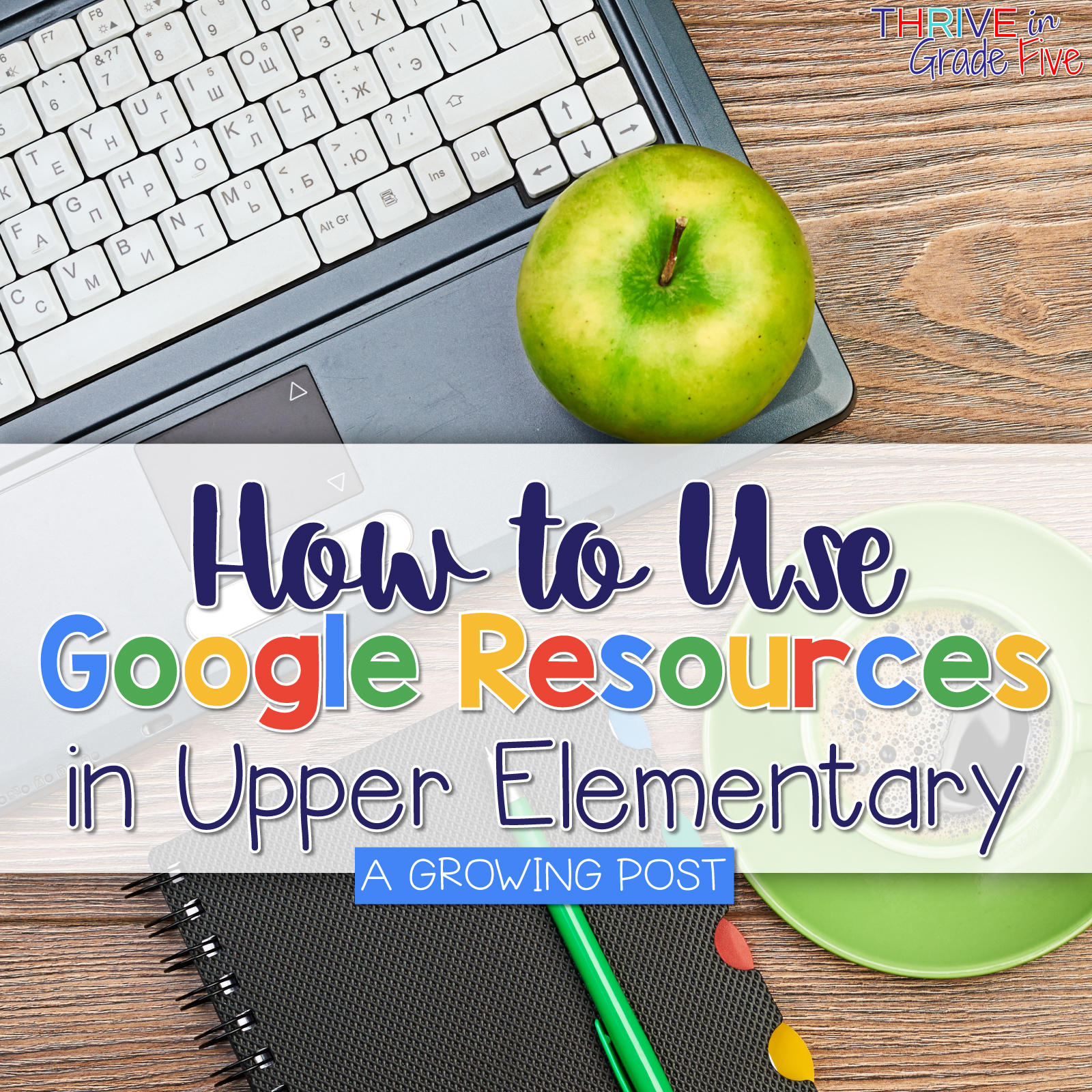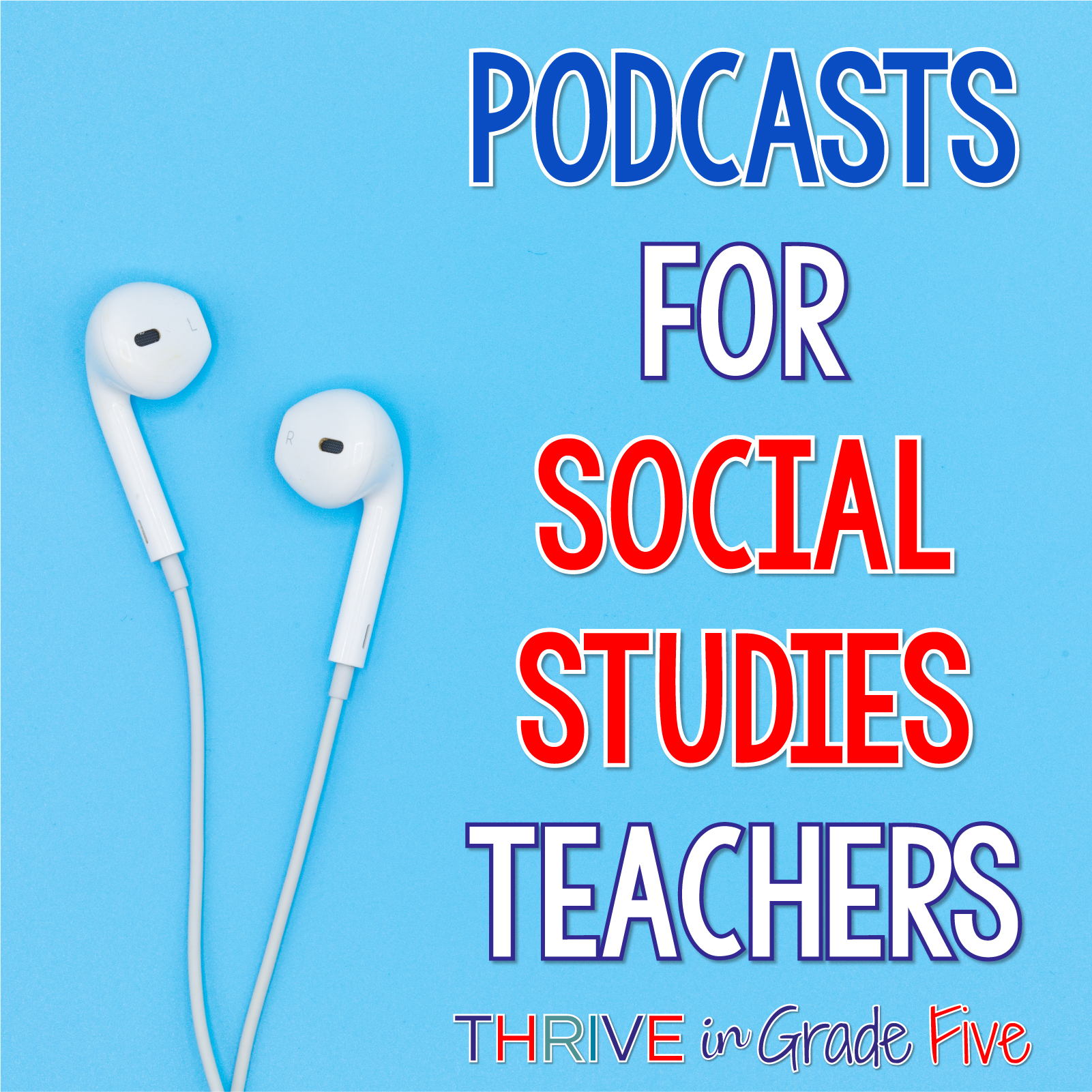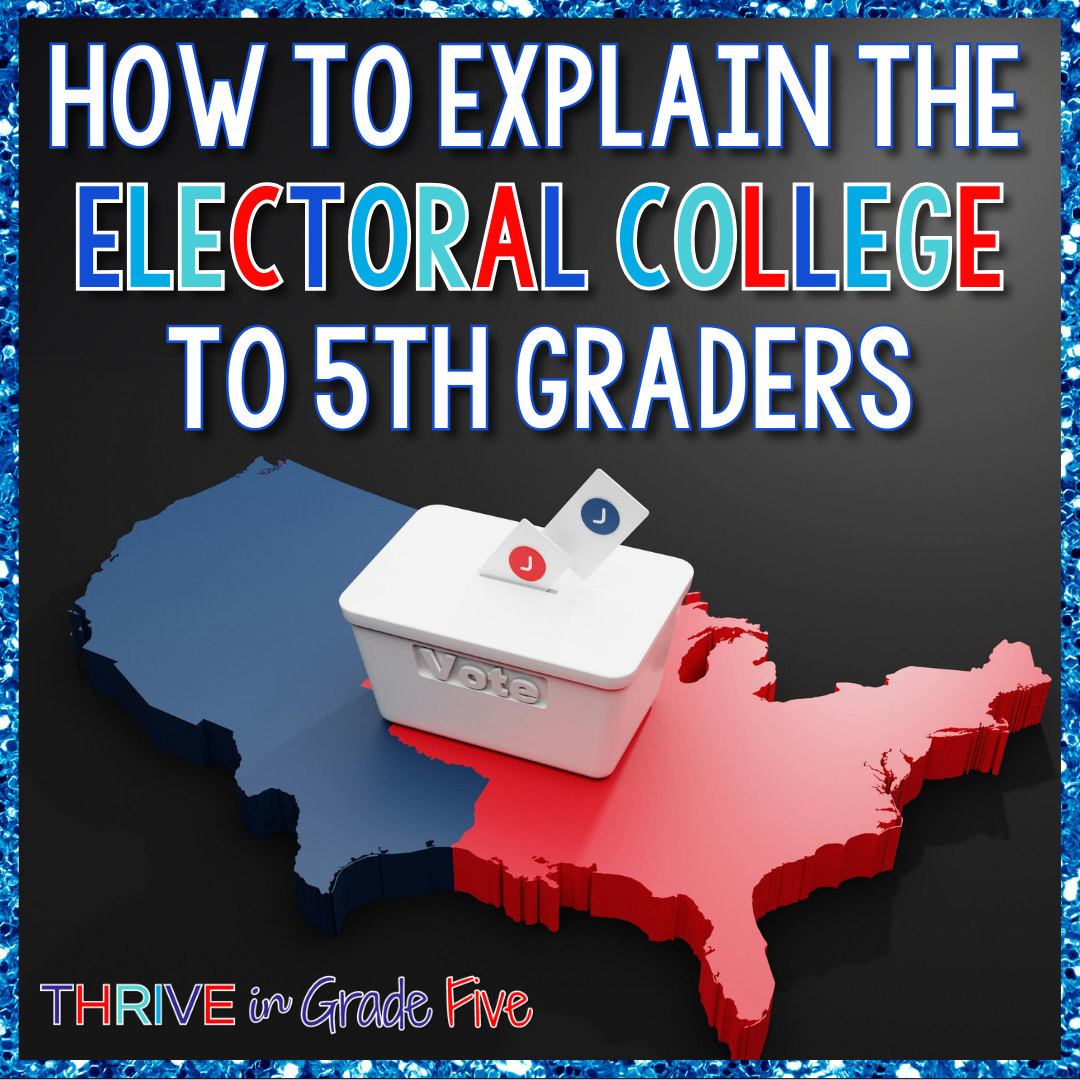If you are a struggling social studies teacher OR you just want to make your social studies lessons amazing, you’ve come to the right place!
I’m a social studies/history nerd and I’m here to help!
When I first started teaching social studies, I struggled somewhat BIG TIME… but over the years, I got it together and now I LOVE helping other teachers who want to make their social studies lessons sparkle!
I can’t wait to give you my best tips while sharing some amazing tidbits of advice from teachers around the country!
Before we dive in, I’d love for you to join my VIP email club just for upper elementary social studies teachers 🙂 No spam, just help, ideas, resources, and fun!

Focus on one improvement at a time!
I think the best diet advice I ever received was to make only one change at a time.
Once I considered myself cured of my root beer addiction, I had the confidence to make another change, then another, and another.
This “one change at a time” rule also applies to teachers.
When struggling with a classroom issue, whether it’s consistency, remembering to take attendance, or improving your social studies teaching, you should focus on ONE improvement at a time
Maybe you want to include one primary source per unit -OR-
Maybe you want to start an interactive notebook with students -OR-
Maybe you want to do more to integrate writing into your social studies class…
As much as you want to do it all, you can’t. So give yourself grace and make only one change at a time.
Morgan from Missouri: My best advice for a teacher struggling with teaching social studies is to focus on one area at a time, such as the content. Once you know what you’re teaching, you can shift to focus on the how.
What can you do better today or this week? Start there!

Integrate social studies into every subject!
Integrating social studies into other subjects is a time multiplier AND a huge help for struggling social studies teachers.
You will have more time to teach and your students will make more learning connections. It’s a win win!
It’s easier than you think! Every reading/language arts skill can be taught using social studies content.
Integrating Social Studies and Reading
A wise principal once said to me, “Social studies is all about nonfiction reading skills.”
For example, when teaching cause and effect, you can use social studies topics as discussions or journal prompts.
- Describe one effect that the Proclamation of 1763 had on American colonists.
- Why did many Loyalists sail to England during the American Revolution?
- Write three ways that the Bill of Rights impacts our daily lives.
Integrating Social Studies, Art, and Writing
When teaching writing, include social studies topics as prompts. This post about integrating social studies and writing will give you specific guidance and ideas.
What’s better than combining social studies and writing? Combining social studies, writing, and ART!
Many of our students are artistic but have few opportunities to share their talents due to time constraints.
However, combining subjects frees up a little time and allows students to show some creativity.
One of my favorite examples of this is to have students create No Taxation without Representation posters. (freebie)
Here are a few other examples of combined social studies/writing/art projects that my students LOVE:
Colonial America Projects Bundle – Art & Creative Writing Projects
American Revolution Projects Bundle – Art & Creative Writing Projects
Lynda from California: My best advice is to integrate social studies and/or science into your core curriculum time (reading, writing, and math). When you integrate, you gain minutes instead of struggling to fit it all in during a school day.

Think outside of the textbook!
Sure, textbooks are great for basic information, but that’s what they are… basic information.
Real learning happens when students use critical thinking skills, discussions, projects, and hands-on activities.
There are so many options here, teacher friend!
To start, choose one piece of content you need to teach.
Then, decide on one engaging, student-friendly activity that will help students to interact with the content and will help the content to stick in their minds.
For example, when I teach about the pre-Columbian Native Americans of the Pacific Northwest, I use a gallery walk with my students. They interact with primary source photographs and discuss details of the region.
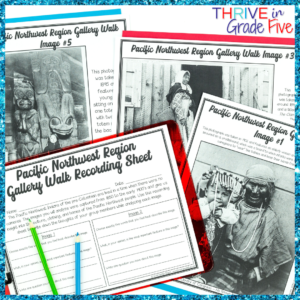
Another way to think outside of the textbook is to find interesting stories that bring people and events to life, like Colonial Hygiene, the Burr-Hamilton Duel, Lucy Flucker Knox… The sky is the limit!
For example, learning that George Washington was Commander in Chief of the Continental Army means more to students when they understand the frustrations he faced during the American Revolution.
Making people from history RELATABLE and HUMAN leads to more connections and deeper student understanding.
Tracy from Oklahoma: If you are struggling with social studies, research to find interesting facts about the topic that you are teaching. Anything extra and/or interesting that you can find adds to your lesson and will engage your students. They will start to look forward to social studies because they want to know something that isn’t in your textbook/curriculum.
Pam from Indiana: I think social studies can be the most interesting subject there is for students, but it also can be the most boring–and it’s all in the delivery! For instance, instead of telling them about how early Americans bartered for items, set up a bartering system in your classroom.
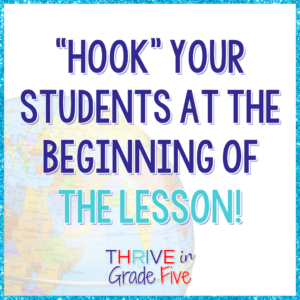
Hook your students at the beginning of the lesson!
The beginning of any lesson or unit should be where you grab students’ attention and spark their curiosity. How can you do this?
Tell a great story!
Students love listening to stories.
If you can start the lesson with a story about an interesting, and related, person or event, you’ll have their attention from the very beginning, guaranteed.
There are lots of ideas in this post: The Importance of Telling Stories in Social Studies Class
Use primary sources!
Show students a primary source, or even part of a primary source.
When working with fifth graders, it’s often sufficient to use just a piece of a primary source, especially if it’s lengthy or difficult.
For example, when teaching about the economy of the Southern Colonies, you might show students one 18th Century newspaper advertisement in which an artisan is seeking an apprentice.
Start with a guiding question!
Write a question on the board that you and your students will work to answer as you move through the lesson.
This should be a question that directs students to reflect on what they’ve learned during a lesson or unit.
A guiding question does NOT have a yes/no answer.
This is an example of a guiding question for Jamestown’s Starving Time: How did disease, famine, and conflict with the Powhatan people lead to a disastrous period at Jamestown?
Laura from Washington: My best advice for teachers struggling with Social Studies is to introduce units with hands-on, student led discovery activities. Whether that’s internet-based scavenger hunts, scavenger hunts around the classroom with various snippets of information introducing the topic placed around the room, or group sort and predict activities. Anything to get students talking to each other and asking their own questions about the new content will create immediate buy in because they want to see if they’re right or have their curiosities or theories addressed.
Tonya from Indiana: Be as creative as you can because kids seem to struggle getting into history. Be excited as you approach each topic. I use a small box and put different artifacts in it that help them identify what topic we are going to study next. I wear a Sherlock Holmes outfit when I pull things out of the box to help them guess the next major topic we are going to discuss. They have fun and it brings a sense of excitement to the introduction.

If you are struggling with social studies, there’s help readily available. You just need to know where to look!
Fortunately for us, there are many sources of guidance, ideas, resources, and help for struggling social studies teachers.
When I started teaching social studies, I had no clue that there were foundations, organizations, and other teachers who were ready and willing to help me teach social studies effectively AND make history come to life for students.
Here are a few of my favorite sources for resources, ideas, images, and inspiration:
- Colonial Williamsburg Teacher Page
- Mount Vernon for Teachers
- Library of Congress for Teachers
- Thrive in Grade Five: How I Teach 5th Grade Social Studies
Mary Beth: I have two recommendations. First, utilize resources from local historical societies or larger ones such as the Colonial Williamsburg Foundation. They have a great teacher resource library! Many of these organizations also offer workshops for teachers (I attended the Teacher Institute at Colonial Williamsburg and got a ton of resources, plus it’s a great opportunity to get ideas from other educators). My second recommendation is to join online learning communities. I often get my best ideas from other teachers!
Tonya from California: Do NOT reinvent the wheel! Look for blogs, ideas, and activities from other experts in this area. If you have moved to a new grade level and need ideas, it’s ok to seek out others who are seasoned and more veteran in the area.

Ready for more excellent advice from veteran social studies teachers?
When I asked some of my experienced social studies teacher friends for advice to share with struggling teachers, they really came through!
Marilyn from Texas: My advice to a teacher struggling to teach social studies is to see yourself as a historian and make connections to current events. 9 times out of 10 there is an event within the last few years that is relatable to students. Like all other content areas, students want to know how this is applicable to them.
Tami from South Carolina: I teach at an arts school. The more arts you can incorporate into social studies, the better. Example: My students painted themselves on white bulletin board paper in line getting soup during the Great Depression. They all had a focal point on their painting in line. They also did speech bubbles explaining why they were in line.
Laura from Kentucky: When teaching new content, allow students to act out historical information and bring it to life. Also, start lessons with a picture or video about the content and get students to ask questions about it. It will instantly engage them in learning. Bring in “artifacts” such as an old boot (of colonists), painted rocks (gold), dirty water to show the struggle at Valley Forge.
Need step-by-step help and guidance? There’s a course for that!
Check it out here: Teaching Social Studies in Upper Elementary
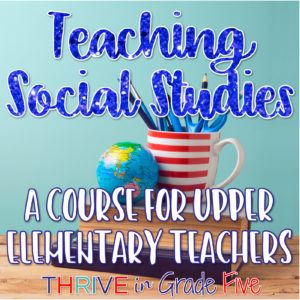
Before you leave, I’d love for you to join my VIP email club just for upper elementary social studies teachers 🙂 No spam, just help, ideas, resources, and fun!
